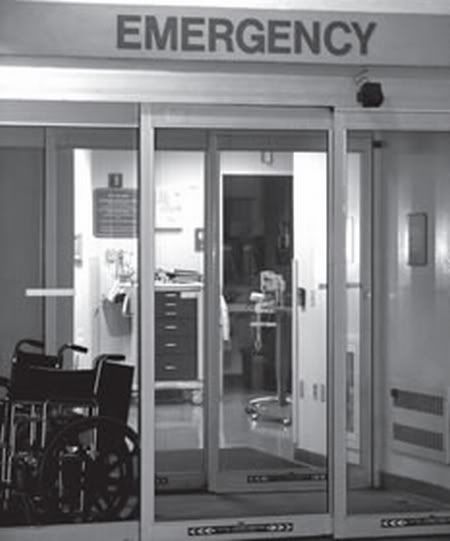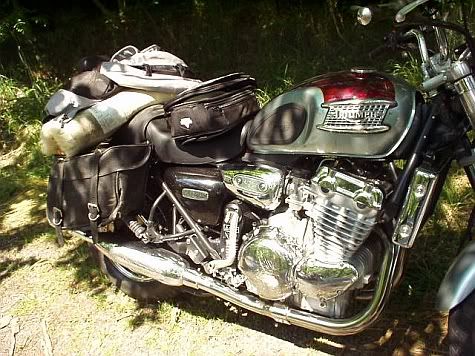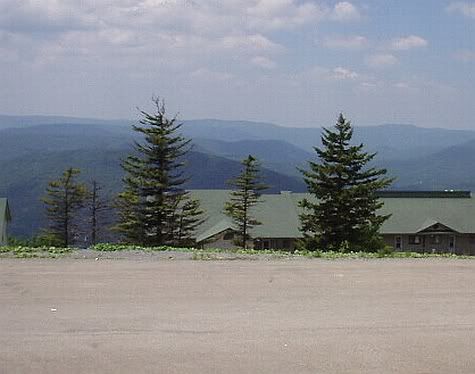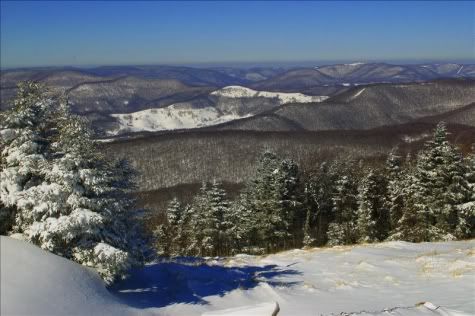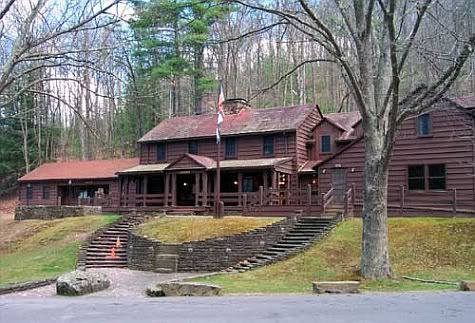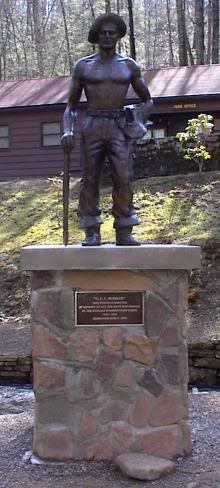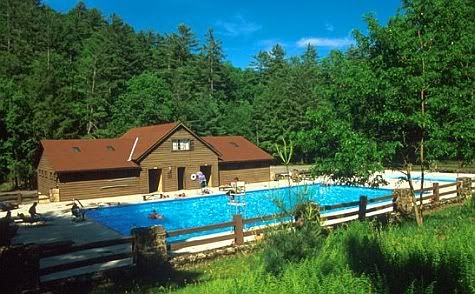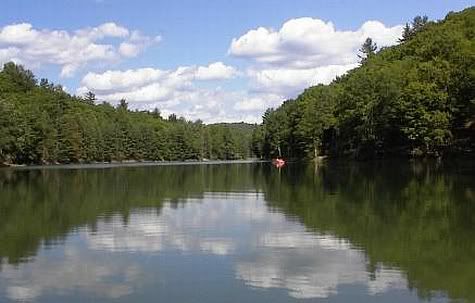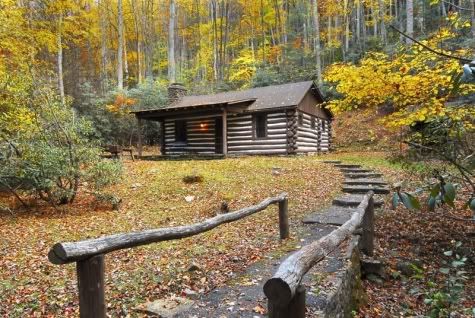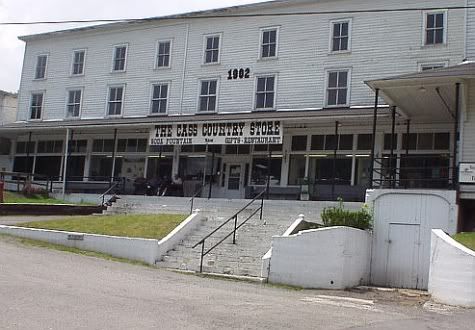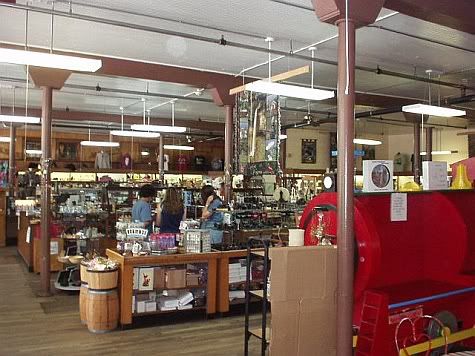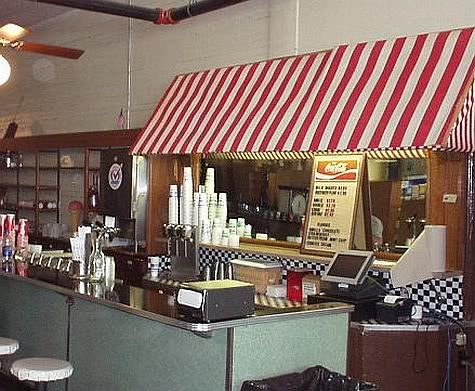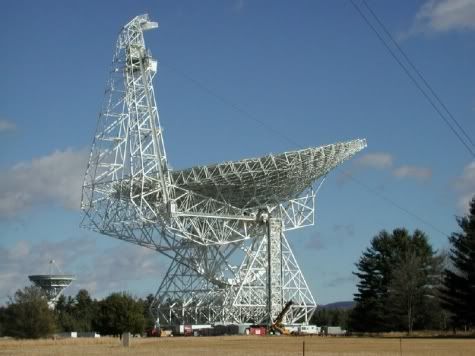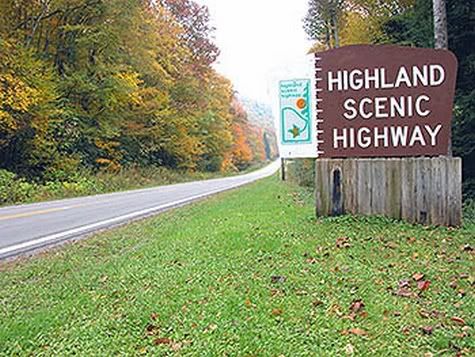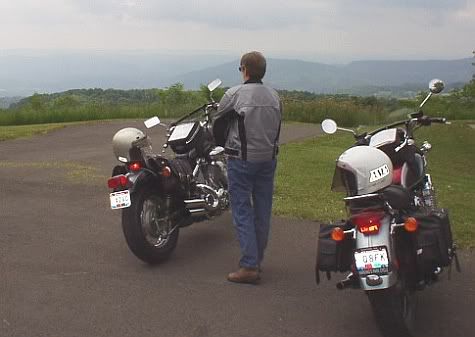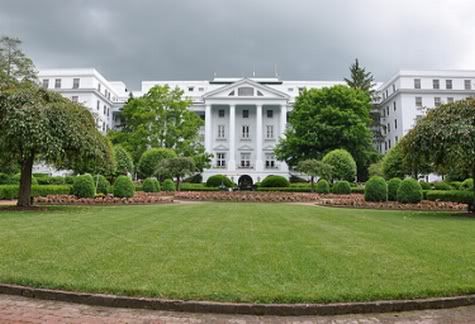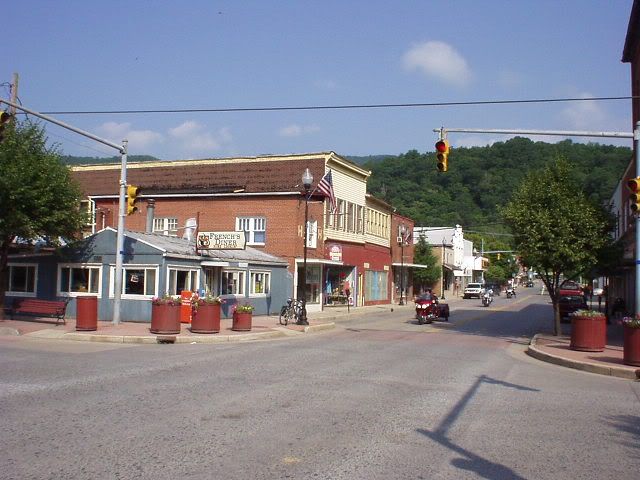[Monte after the accident waiting for an ambulance.]
The tease: June 24, 2005 Day Planner entry, after the fact: "Hit deer - totaled bike - ended at Trauma Unit, UVA Hosp, Charlottsville, 2 1/2 days - bad scene all around."
What you may have missed:
Part One: http://open.salon.com/blog/monte_canfield/2010/02/19/motorcycling_memories_oh_deer_part_one
Part Two: http://open.salon.com/blog/monte_canfield/2010/02/20/motorcycle_memories_oh_deer_part_two
Part Three: http://open.salon.com/blog/monte_canfield/2010/02/21/motorcycle_memories_oh_deer_part_three
Part Four: http://open.salon.com/blog/monte_canfield/2010/02/22/motorcycling_memories_oh_deer_part_four
Part Five: http://open.salon.com/blog/monte_canfield/2010/02/23/motorcycling_memories_oh_deer_part_five_the_accident
When we are in a serious accident and realize we have mde it and are alive if we have strong personalities there is a tendency to think we are "over the hump" and everything is going to be fine. Our optimism gets well ahead of the reality. Our hope becomes certainty that is based on what we want. And we don't want facts to get in the way.
That, in turn, makes us impatient with professional medical personnel who are trained not to cater to what we want but to follow well established and proven procedures that both ensure no more damage is done ("First do no harm.") and that what appears to be true about the health of the patient is, in fact, true. ("Test. test, and then test again.")
This tension is inevitable when the patient is alert and opinionated. There are drugs that can help reduce that tension, which is good to the extent that they tone down the fantasies of the patient that insist that he can "walk out of here right now." It can be bad, however, when the drugs are used simply to control of the patient. Medical personnel therefore walk a fine line between doing what is right for the patient and what is convenient for them.
After I finally agreed to lay down it was decided that I should not get up again until the emergency services people got there to check me out. I didn't decide that; but it was easier to go along than to argue. Plus, I was starting to feel lightheaded and drained of energy.
The first thing the six of us, Sue, me and the two BMW riding couples, learned was that none of our cell phones could get a signal. So the first order of business was for someone to go find a phone and call for an ambulance. One of the couples set out to do that.
The blow to my chest had caused a hematoma that was increasing in size. It was continuing to bleed into the muscle and surrounding tissue. While I did not realize it would continue to get larger, we decided to try to get some ice to pack on it because it was hurting more and more.
While they were gone I was talking to Sue asking her what she had seen and what had happened to her while the wreck was going on. I was interested in this because had this happened two years ago we would have both been on the same motorcycle and both of us would likely have been badly hurt.
One of the reasons I had encouraged Sue to take the safety course and get her own motorcycle endorsement was because I had always feared what would happen to her in an accident were she riding with me.
She said that the first thing she saw was me on the ground sliding and the bike sliding along behind me. She did not see the deer run into the bike. Fortunately, I had taught her to not ride too close to me on tight roads like this one so that she would have time to react to something exactly like what happened.
She said she hit the brakes too hard and locked the wheels. That is usually very bad news unless the bike is fully straight and vertical and stays that way. Once you are in a slide on pavement the key is to NOT let up on the brakes until you are almost stopped and simply ride it out, keeping the bike straight and vertical.
If you release the brakes too soon the bike will almost always crash. She followed what she had learned and rode it out perfectly. The picture of the crash site in the last post shows the black streak she laid down after she locked the brakes.
Also, while we were waiting the guy who was still supporting my head on his leg told me that he and his wife and the other couple owned a BMW dealership in New Jersey and were also on the last day of their trip. They were also taking valley rides but had intended to ride only the larger, wider highways.
However, when they settled in behind us they found that they liked our pace and were enjoying the slower riding so they just decided to stick with us, even when we turned down the smaller road. He did say that I "looked like I knew where I was going." I said I did not, but knew where I intended to end up, and that this wasn't it!
After a few minutes the other couple returned having called 911 and said that an ambulance was on its way. Shortly after that a Game Warden who was in the area and heard the alert on his service radio pulled up in his truck.
He was very helpful, moved the deer off of the road and started directing the small amount of traffic that came down the road. By him keeping them moving we avoided a large crowd of onlookers gathering and getting in the way.
Some Granny Clampett type lady walked over from her farm and started telling everyone what to do and why and what she would do and why we should not ride motorcycles, and on and on.
At some point she went to look at the deer, came back and asked Sue if we wanted the deer! Sue said "no" so she went to make arrangements with the Game Warden to take the deer home and butcher it. I didn't even want to think about that but I do know that most states allow that.
It took the ambulance another 45 minutes to arrive. Looking at a map much later I could see why since the hospital was directly east from where we were and there was no direct cross road over the mountains. This meant that the ambulance had to ride 20 miles up to route 39, go across two mountains, across two valleys, and then turn down some 20 miles to us.
When the ambulance got there I was kind of out of it. The EMTs insisted that I not move. I protested, rather loudly, that if they would just help me onto my feet and be careful of my shoulder I could walk to the ambulance. That elicited the first stern "No!" of many I would hear over the next three days.
First they carefully put a neck stabilization brace on me.Then they removed my boots which caused my right foot to light up with pain. They then rolled me on my side and back onto a spine board and began to strap me into it from my forehead to my ankles.
It was at this point that I pointed out that I had a dislocated shoulder and to try to be careful of that. They looked at my shoulder and told me it was not dislocated. I said I knew it was no longer, because I had popped it back in place. They were very skeptical but one of the BMW guys said I was telling the truth and that they should have heard it! They became believers.
They started to put the strap below my shoulder across my chest when I went white with pain and said that it really hurt so they took a look at my chest. The hematoma was twice as big as it had been a half hour before. They were shocked at the size and concerned. Sue told them we had been putting ice on it and they agreed that was the best thing continue to do for now.
Their concern woke me up a bit and I think that was the first time I realized that maybe this thing was not quite over. So I quit arguing and they got me onto a gurney and into the ambulance. One thing, unrelated to the hematoma, that I did not know then is that I would spend the next 30 hours! strapped to the spine board.
Sue gathered up all of our loose items and put them in the ambulance. The BMW riders, whom we now considered angels in disguise, agreed to stay with the bikes until law enforcement showed up. After we left a State Trooper showed up and called a wrecker. He was told what hospital we were going to and told the wrecker driver to gather up both bikes and to follow him to the hospital where the wrecker could drop Sue's bike off.
Meanwhile, Sue rode in the front with the driver and two other EMTs rode in the back with me. I have little memory of the ride to the hospital. I don't know whether or not I was sleeping, or whether they put in an IV and had given me something to settle me down. I had been pretty uncooperative before they got me to agree to be strapped to the board.
In any case all I remember is the ride being bumpy and seeming to take forever. In fact it took probably 45 minutes or less. I was a bit more alert when they took me out of the ambulance and into the emergency room. Sue tells me that they would not let her stay with me saying they were going to do a lot of tests and meanwhile she should go fill out paperwork. I was told that we were at the Bath County Community Hospital in Hot Springs, VA.
[I later learned that the Bath Hospital was an acute and emergency care facility, tiny, with only 25 beds but equipped with trained emergency doctors and other personnel and had good laboratory and diagnostic equipment. All of the equipment and lab work was tied directly into the UVA Trauma Center at Charlottesville by telemetry so that the doctors at the Trauma Center could read the results directly although they were almost three hours away by car. So it was not the light weight facility I assumed it was.]
I really don't remember having the tests, but the bill says they did several CAT scans, head, shoulder, chest and spine and Xrays of my spine and my right foot. I do remember them bringing me to a small curtain enclosed area where Sue was and we talked a bit before she told me that based on the tests they were going to airlift me to the University of Virginia Medical Center's Trauma Center.
That did not sit well with me since I don't like to fly and surely did not want to fly in a helicopter over mountains! But Sue had already told the doctor that and he said that I should not worry they would give me some morphine before they loaded me on and I would be OK with the ride. I wasn't so sure but I was alert enough to know that if these preliminary tests indicated the need to airlift me to a huge trauma center I had better do it.
The final indignation was that, in order for me to be airlifted I had to have a catheter. Oh, joy! Some young nurse must have been doing it for the first time (she looked like she was about 13) and couldn't quite accomplish it. But she was very good at inflicting pain. I forgot all about my shoulder, my aching chest and my throbbing toe.
So some Brunhilde type that you would not want to meet in a dark alley came in to do it. By then I was wide awake and fearful. Well, Brunhilde slipped that puppy in there with so little pain I didn't realize she was done until she looked at me, smiled and said, "There you go." Another angel in disguise!
It was also the first time I realized that they had somehow gotten my clothes off of me and put me in a gown. How they did that then strapped me back to the spine board I have no idea. I remember none of that.
By then I could hear a chopper landing nearby and the doc came in with some nurses. At that point I also first realized that I had an IV line in. Whether that was done by the EMTs or by the folks at the hospital, I do not know. In any case the EMTs came back in with their gurney to take me by ambulance again to the chopper which had to land a few blocks from the hospital for some reason.
After they had me settled on the gurney the doc injected some morphine into the IV. I immediately noticed these blotchy red spots all over the arm the IV went into and these quickly spread. I also noticed that my tongue felt funny and I was getting kind of red all over. The doc was not watching so I told Sue who told him what was happening. He just said to her that "He really has to get to the Trauma Center."
He came over to me and said, "Look, you need to get to the Trauma Center. That hematoma is getting larger and we can't stop that here." Well, that was pretty powerful motivation for me and I just said, "OK. Thank you. We'll do whatever you say."
So he decided to give me some IV anti-allergic reaction medications and let me go. He told the EMTs to explain what had just happened and what meds he gave me. Then he turned to me and said, "Good luck. You should be fine. But you must do this to insure it." And they wheeled me out.
END OF PART SIX
Next: The Chopper Ride: "I didn't know that hallucinations were part of the morphine package." "Hurry up and wait." or "There is always someone worse off than you are." And, test, test and test again."



